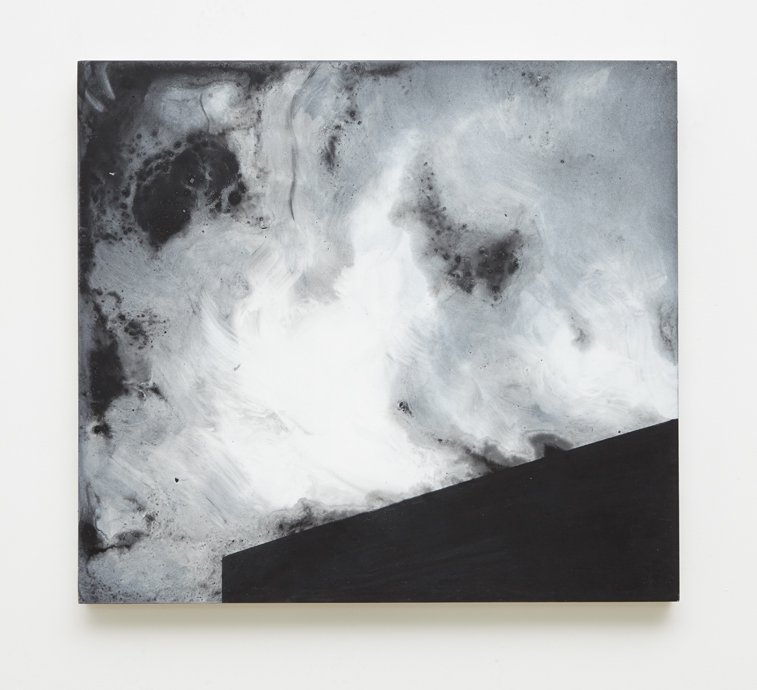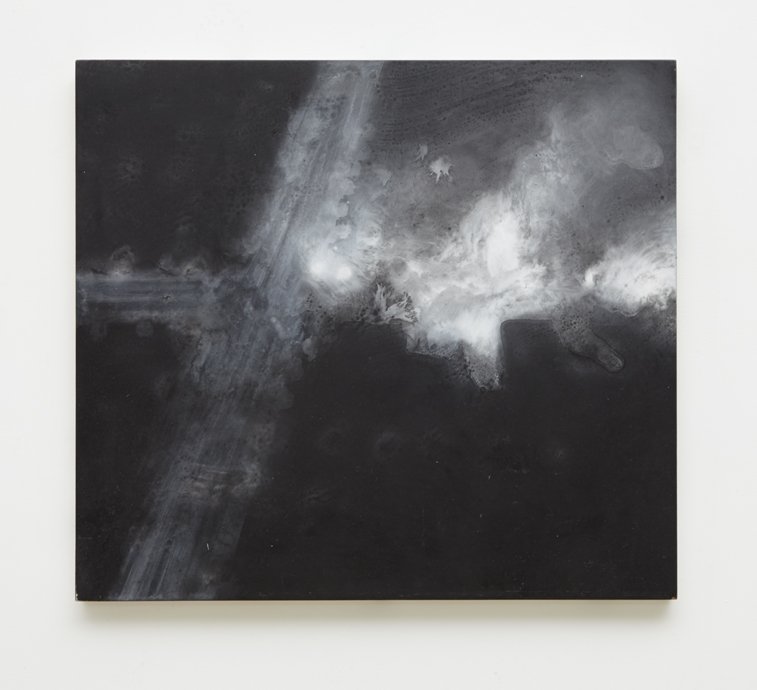Peter Alexander
Los Angeles Riots
April 1—25, 2015
Franklin Parrasch Gallery is pleased to present an exhibition of works by Peter Alexander created during the Los Angeles Riots in 1992. On April 29th of that year, four LAPD officers were acquitted of all charges in the beating of unarmed African-American motorist Rodney King. The assault had been caught on citizen videotape, and it generated a nationwide debate about police brutality and race. Within hours of the announcement of the jury’s decision, violent protests broke out in South Central Los Angeles, just a few miles from Alexander’s studio.
“I was in the Marina [del Rey] studio at the time the verdict was coming out. Sometime during the day I remember getting on the freeway and wanting to drive downtown, which I did, but the freeway was empty… and you could see the smoke from the Santa Monica Freeway… and there were choppers everywhere. As it got dark, the drama became evident. I was watching the TV.” [1]
As the story unfolded in front of him, Alexander felt the need to make work. Live footage from news helicopters became the primary source of visual documentation of the riots and their aftermath, and the images that filled the TV screen were compelling on every level. Rather than focusing on politics, conflict, or human drama, Alexander responded to the raw beauty of the fire and explosions: the bursts of non-electric light in high contrast against the urban night. He began photographing the events as they appeared on TV. The human impulse to destroy—and eventually rebuild—played out on the news, and as he shot stills of the color coverage using a 35mm camera loaded with black and white film, Alexander was mesmerized by the imagery, glued to his television watching the dramatic visuals of Los Angeles ablaze.
Using these photographs as source material, Alexander prepared a series of identical 18×20 inch panels. He first applied white and then black gesso; the smooth, carefully sanded ground allowed for the poured and dripped white acrylic paint to sit delicately on the surface of the paintings, appearing watery and lithe. Graphic and achromatic, the imagery shifts between the purely gestural and the contextually recognizable, e.g. building structures and facades, roadways, billowing smoke, and flames. Alexander’s main focus, however, is in keeping with the driving force consistent throughout his oeuvre: the articulation and perception of light and its transmittal in this particular atmospheric environment. Los Angeles, a city somewhat destined to destruction by wildfires or earthquakes, was on fire, yet Alexander saw not the destruction but the inevitable reseeding of the city through the flames.
[1] Peter Alexander














